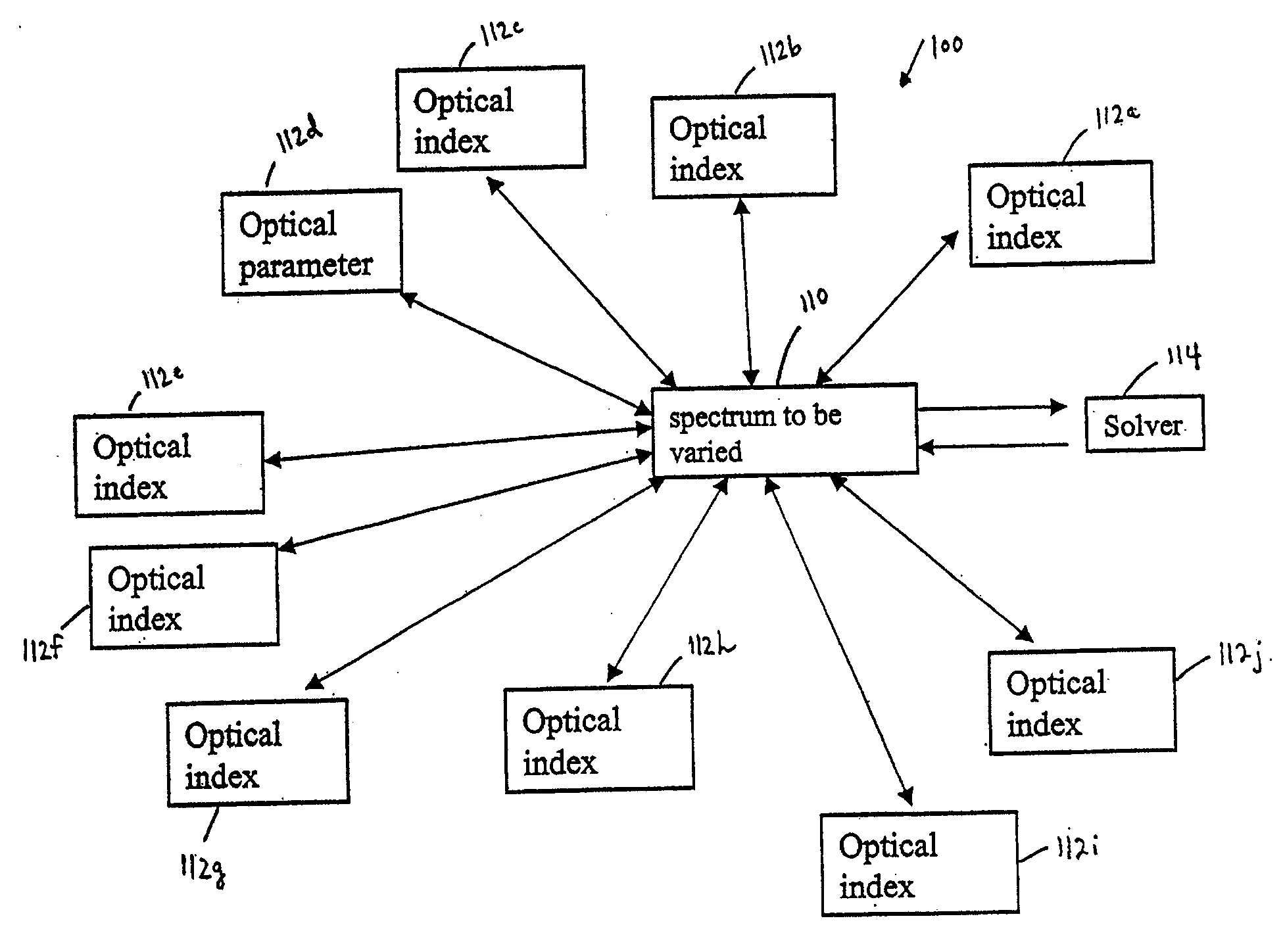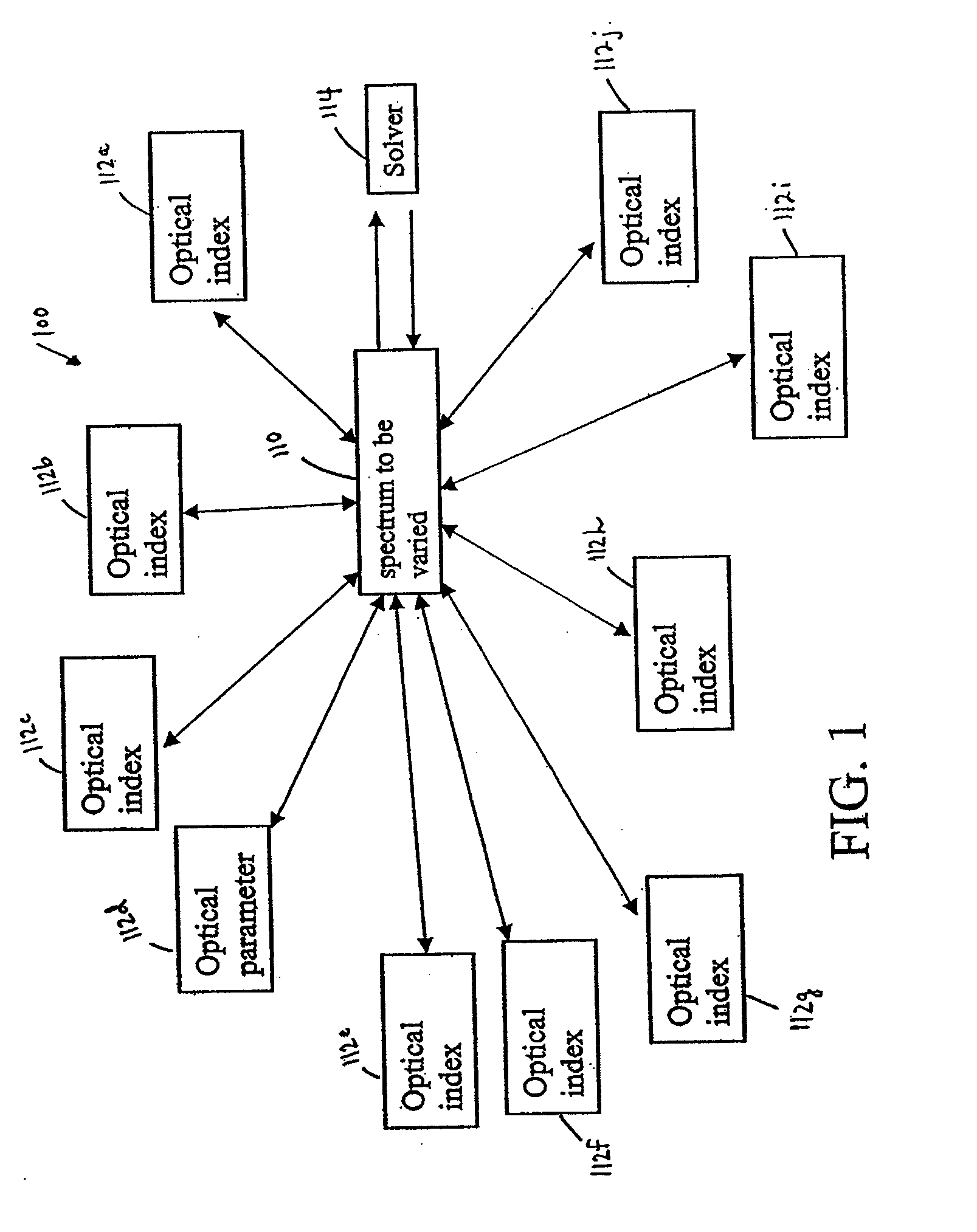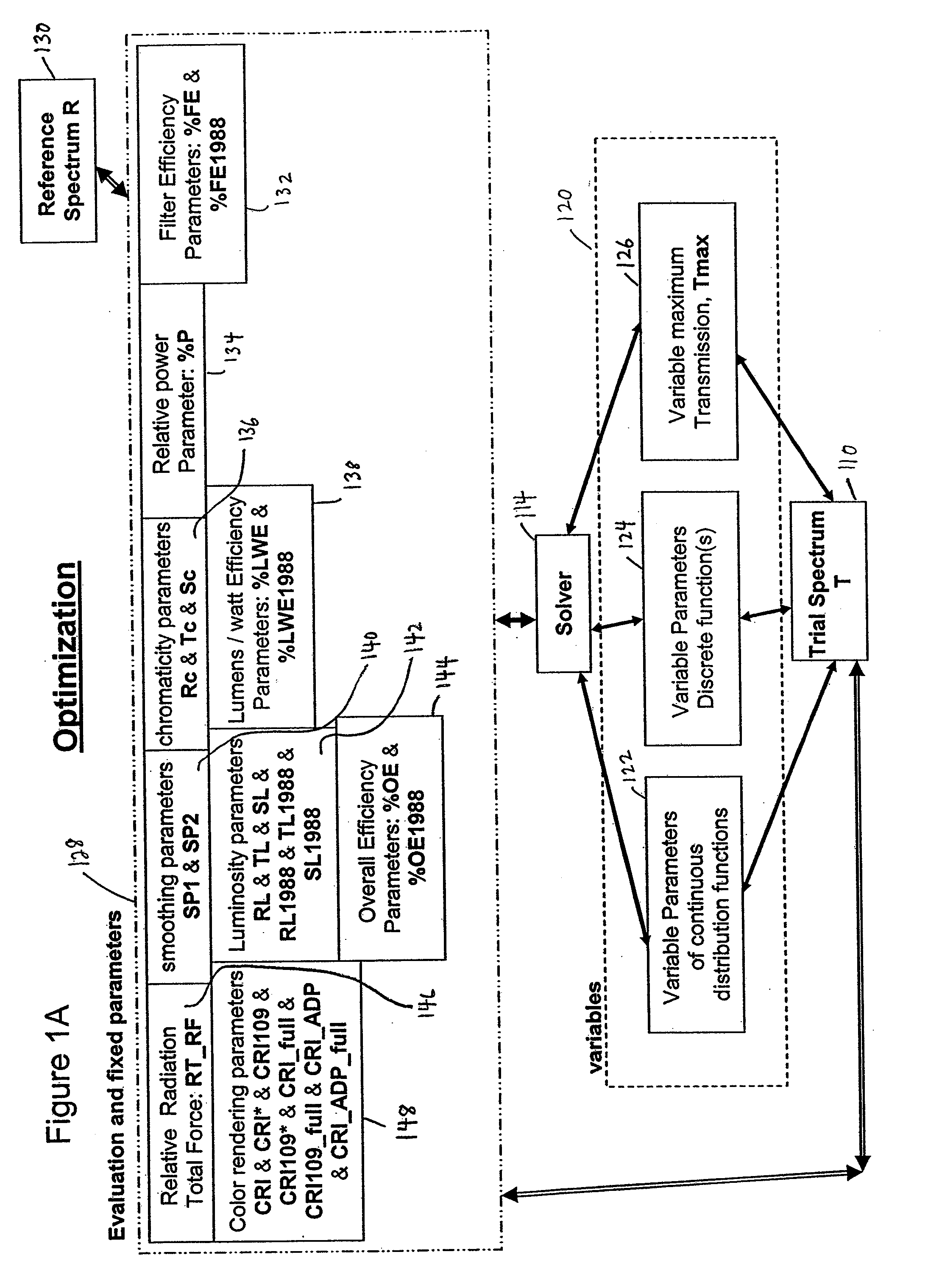Illumination Sources and Customizable Spectral Profiles
a technology of illumination sources and spectral profiles, applied in the field of optics, spectroscopy, and illumination sources, to achieve the effects of reducing power on a target, reducing power consumption, and maximizing spectral distribution
- Summary
- Abstract
- Description
- Claims
- Application Information
AI Technical Summary
Benefits of technology
Problems solved by technology
Method used
Image
Examples
Embodiment Construction
[0063]In general, the present invention provides techniques for generating customized spectral profiles, which can be used to generate corresponding optical filters, lamps or other illuminants customized to a spectral profile. Representative embodiments relate to spectral profiles that may be used to generate optical filters, lamps, or other types of illuminants that (a) protect objects such as works of art, (b) aesthetically render objects, and / or (c) correct the rendering of an object. Other uses of the spectral profiles will be apparent to those of ordinary skill in the art, having the benefit of this disclosure.
[0064]Custom spectral profiles may be created according to a particular visualization application. Once the custom spectral profile is created, a corresponding filter, lamp, or other illuminant can be built to realize that spectral profile. This filter could be of the interference type, the absorptive loss type, or a combination of these types. Different visualization app...
PUM
 Login to View More
Login to View More Abstract
Description
Claims
Application Information
 Login to View More
Login to View More - R&D
- Intellectual Property
- Life Sciences
- Materials
- Tech Scout
- Unparalleled Data Quality
- Higher Quality Content
- 60% Fewer Hallucinations
Browse by: Latest US Patents, China's latest patents, Technical Efficacy Thesaurus, Application Domain, Technology Topic, Popular Technical Reports.
© 2025 PatSnap. All rights reserved.Legal|Privacy policy|Modern Slavery Act Transparency Statement|Sitemap|About US| Contact US: help@patsnap.com



